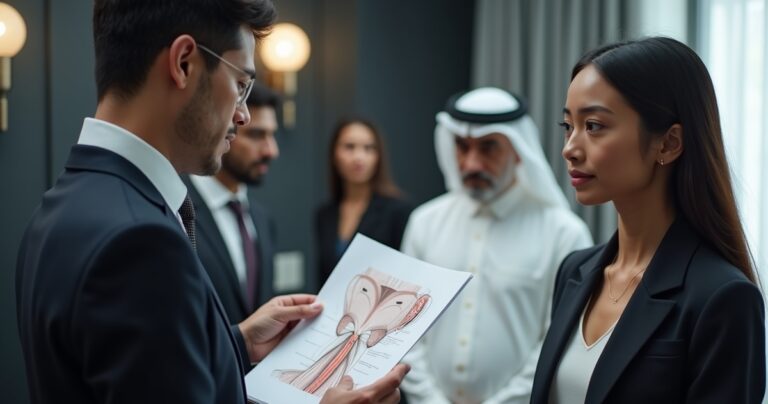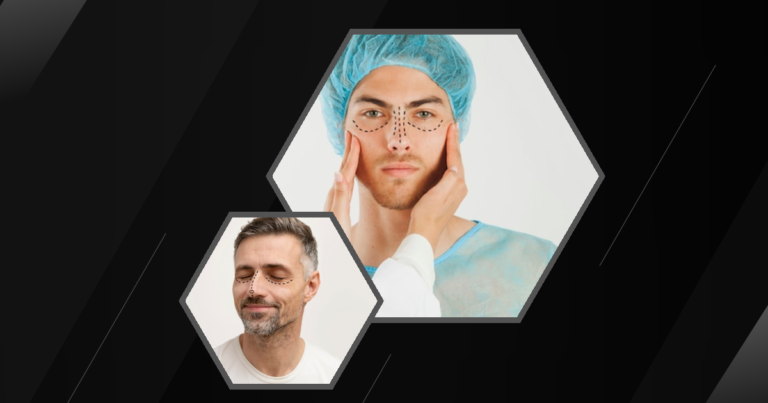Rhinoplasty by Laser Techniques
Rhinoplasty by Laser is a modern approach to nose reshaping that utilizes advanced laser technology. This technique offers a less invasive option compared to traditional methods, providing patients with a more comfortable experience and quicker recovery. The precision of lasers allows for targeted treatment, minimizing damage to surrounding tissues.
Cosmetic Nasal Reshaping is a surgery to change how your nose looks it can make your nose bigger smaller or a different shape to improve your appearance
Laser-Assisted Rhinoplasty
Laser-assisted rhinoplasty involves using lasers to make precise incisions and reshape the nasal structure. This method reduces the need for traditional surgical tools, leading to less trauma and faster healing. Patients often experience less swelling and discomfort, making the recovery process smoother.
- Precise incisions with minimal tissue damage
- Reduced swelling and discomfort
- Faster recovery compared to traditional methods
CO₂ Laser Rhinoplasty Microsurgery
CO₂ laser rhinoplasty microsurgery is a specialized technique that uses carbon dioxide lasers for intricate nasal reshaping. This method is particularly effective for refining nasal contours and addressing minor imperfections. The CO₂ laser’s precision ensures minimal scarring and optimal results.
- Ideal for refining nasal contours
- Minimal scarring due to precise laser application
- Effective for minor nasal imperfections
Laser Resurfacing for Nasal Scars
Laser resurfacing is a technique used to improve the appearance of nasal scars post-rhinoplasty. By targeting the scar tissue, lasers promote collagen production and skin regeneration, resulting in smoother skin texture and reduced scar visibility.
- Promotes collagen production for smoother skin
- Reduces visibility of nasal scars
- Enhances overall skin texture
Benefits of Laser Rhinoplasty
Laser rhinoplasty offers numerous benefits that make it an attractive option for those considering nasal surgery. The use of lasers enhances the precision of the procedure, leading to better outcomes and a more comfortable recovery.
Reduced Recovery Time
One of the most significant advantages of laser rhinoplasty is the reduced recovery time. Patients can expect to resume their normal activities much sooner than with traditional surgery, thanks to the minimally invasive nature of the procedure.
- Quicker return to daily activities
- Less downtime compared to traditional surgery
- Faster healing process
Minimized Scarring and Bruising
Laser technology allows for precise incisions, which significantly reduces scarring and bruising. This results in a more aesthetically pleasing outcome and less post-operative discomfort.
- Minimal scarring due to precise incisions
- Reduced bruising and swelling
- Enhanced aesthetic results
Enhanced Precision
The precision of laser technology ensures that only the targeted areas are treated, preserving the surrounding tissues. This leads to more accurate results and a higher satisfaction rate among patients.
- Targeted treatment for accurate results
- Preservation of surrounding tissues
- Higher patient satisfaction
Candidates for Laser Rhinoplasty
Not everyone is an ideal candidate for laser rhinoplasty. Understanding the ideal patient profile and medical considerations is crucial for determining suitability.
Ideal Patient Profile
Ideal candidates for laser rhinoplasty are individuals seeking minor to moderate nasal corrections. They should have realistic expectations and be in good overall health.
- Seeking minor to moderate nasal corrections
- Realistic expectations about outcomes
- Good overall health
Medical Considerations
Certain medical conditions may affect a patient’s eligibility for laser rhinoplasty. A thorough medical evaluation is necessary to ensure safety and optimal results.
- Comprehensive medical evaluation required
- Consideration of existing medical conditions
- Ensuring patient safety and optimal outcomes
Laser Rhinoplasty Procedure Steps
Understanding the steps involved in laser rhinoplasty can help patients prepare for the procedure and set realistic expectations.
Consultation and Planning
The initial consultation involves discussing the patient’s goals and evaluating their nasal structure. A personalized treatment plan is then developed to achieve the desired results.
- Discussion of patient goals and expectations
- Evaluation of nasal structure
- Development of a personalized treatment plan
Anesthesia and Preparation
Before the procedure, anesthesia is administered to ensure patient comfort. The surgical area is then prepared for the laser application.
- Administration of anesthesia for comfort
- Preparation of the surgical area
- Ensuring patient readiness for the procedure
Laser Application Techniques
The laser is used to make precise incisions and reshape the nasal structure. The surgeon carefully monitors the process to ensure optimal results.
- Precise incisions with laser technology
- Reshaping of nasal structure
- Surgeon monitoring for optimal outcomes
Cost Factors for Laser Rhinoplasty
The cost of laser rhinoplasty can vary based on several factors. Understanding these can help patients budget for the procedure.
Typical Expense Breakdown
The cost typically includes surgeon fees, anesthesia, facility charges, and post-operative care. Patients should inquire about all potential expenses during the consultation.
- Surgeon fees and expertise
- Anesthesia and facility charges
- Post-operative care and follow-up appointments
Influencing Cost Factors
Factors such as the complexity of the procedure, geographic location, and surgeon experience can influence the overall cost of laser rhinoplasty.
- Complexity of the procedure
- Geographic location of the practice
- Experience and reputation of the surgeon
Preparing for Laser Nose Surgery
Proper preparation is essential for a successful laser rhinoplasty. Following pre-operative instructions and undergoing necessary medical tests can enhance outcomes.
Pre-operative Instructions
Patients are given specific instructions to follow before the surgery, such as avoiding certain medications and fasting. Adhering to these guidelines is crucial for a smooth procedure.
- Avoidance of certain medications
- Fasting requirements before surgery
- Importance of following pre-operative guidelines
Required Medical Tests
Medical tests may be required to assess the patient’s overall health and ensure they are fit for surgery. These tests help identify any potential risks.
- Assessment of overall health
- Identification of potential risks
- Ensuring patient fitness for surgery
Aftercare of Rhinoplasty by Laser
Proper aftercare is vital for a successful recovery and optimal results. Patients should follow post-operative care instructions and manage any discomfort effectively.
Post-operative Care Instructions
Patients receive detailed instructions on how to care for their nose after surgery. This includes cleaning the area, avoiding strenuous activities, and attending follow-up appointments.
- Cleaning and caring for the surgical area
- Avoidance of strenuous activities
- Importance of follow-up appointments
Managing Discomfort
Discomfort is common after surgery, but it can be managed with prescribed medications and home remedies. Patients should communicate any concerns to their surgeon.
- Use of prescribed medications for pain relief
- Home remedies to alleviate discomfort
- Communication with the surgeon for concerns
Potential Risks and Complications
While laser rhinoplasty is generally safe, there are potential risks and complications that patients should be aware of.
Common Side Effects
Common side effects include swelling, bruising, and temporary numbness. These typically resolve within a few weeks.
- Swelling and bruising
- Temporary numbness
- Resolution within a few weeks
Rare Complications
Rare complications may include infection, prolonged swelling, or unsatisfactory results. It’s important to discuss these risks with the surgeon.
- Risk of infection
- Prolonged swelling or unsatisfactory results
- Importance of discussing risks with the surgeon
Choosing a Qualified Surgeon
Selecting a qualified surgeon is crucial for a successful laser rhinoplasty. Patients should consider the surgeon’s credentials and ask pertinent questions during the consultation.
Credentials to Look For
Patients should look for board certification, experience in laser rhinoplasty, and a track record of successful outcomes.
- Board certification in plastic surgery
- Experience in laser rhinoplasty
- Track record of successful outcomes
Questions to Ask During Consultation
Asking the right questions can help patients make informed decisions. Inquiries about the surgeon’s experience, the procedure, and expected outcomes are essential.
- Inquiries about surgeon’s experience
- Questions about the procedure and outcomes
- Importance of informed decision-making
Rhinoplasty by Laser vs. Non-Surgical Alternatives
Comparing laser rhinoplasty with non-surgical alternatives can help patients choose the best option for their needs.
Comparison of Results
Laser rhinoplasty offers more permanent and dramatic results compared to non-surgical alternatives, which provide temporary improvements.
- Permanent and dramatic results with laser rhinoplasty
- Temporary improvements with non-surgical options
- Consideration of patient goals and preferences
Cost and Recovery Differences
While laser rhinoplasty may have a higher upfront cost, it offers long-term benefits. Non-surgical alternatives are less expensive but require ongoing treatments. Ultrasonic nose reshaping uses sound waves to change the shape of your nose without surgery It’s a quick way to make small changes to how your nose looks without cutting or stitches
- Higher upfront cost for laser rhinoplasty
- Long-term benefits and fewer treatments
- Ongoing treatments required for non-surgical options
Final Thoughts
Rhinoplasty by Laser offers a modern, less invasive approach to nasal reshaping, providing patients with numerous benefits. By understanding the procedure, potential risks, and aftercare, individuals can make informed decisions and achieve their desired aesthetic goals.
FAQs
How does laser rhinoplasty differ from traditional rhinoplasty?
Laser rhinoplasty uses advanced laser technology for precise incisions and reshaping, resulting in less tissue damage and quicker recovery. Traditional rhinoplasty involves more invasive techniques with longer healing times. The choice between the two depends on the patient’s needs and desired outcomes.
What is the recovery time for laser rhinoplasty?
The recovery time for laser rhinoplasty is typically shorter than traditional methods, with most patients resuming normal activities within a week. Swelling and bruising may persist for a few weeks but are generally less severe. Following post-operative care instructions can further expedite recovery.
Is laser rhinoplasty more effective than traditional methods?
Laser rhinoplasty offers enhanced precision and reduced recovery time, making it an effective option for many patients. However, its effectiveness depends on the specific nasal corrections needed. Consulting with a qualified surgeon can help determine the best approach for individual cases.
Can laser rhinoplasty correct all types of nasal deformities?
Laser rhinoplasty is ideal for minor to moderate nasal corrections but may not be suitable for all deformities. Complex cases may require traditional surgical techniques. A thorough evaluation by a skilled surgeon is necessary to determine the appropriate treatment plan.








